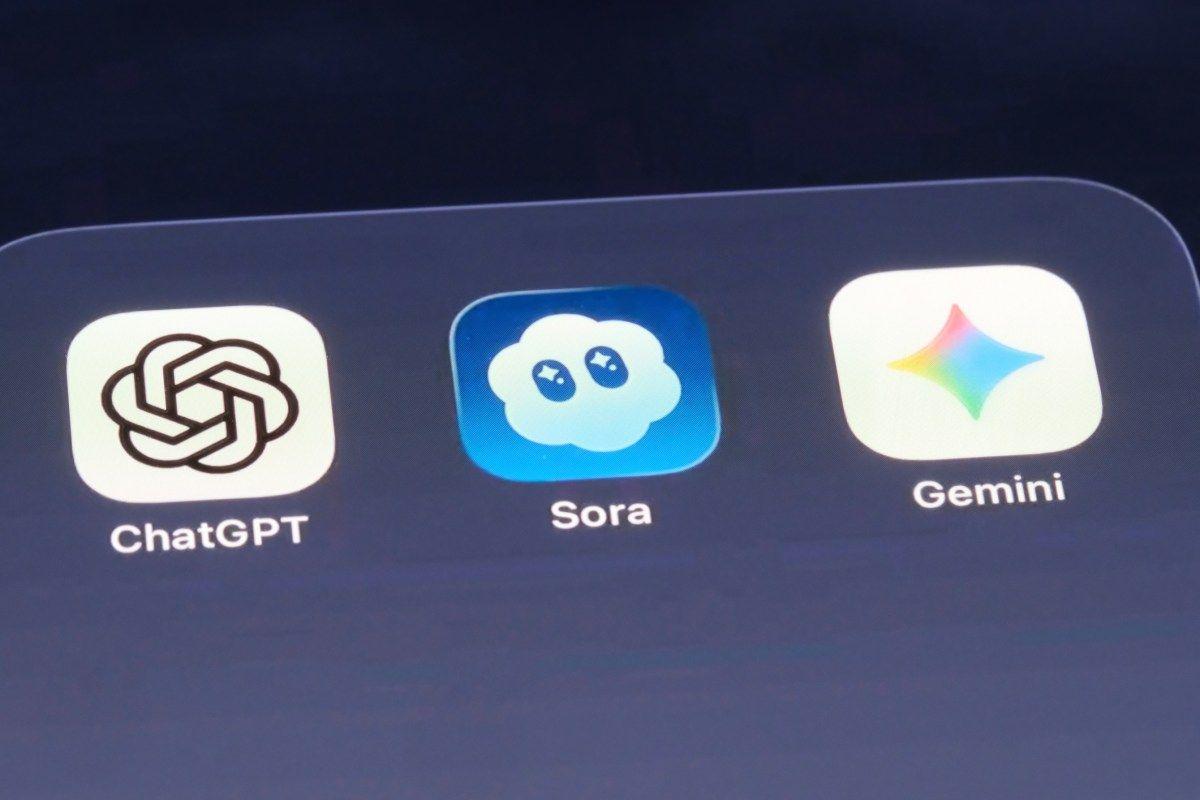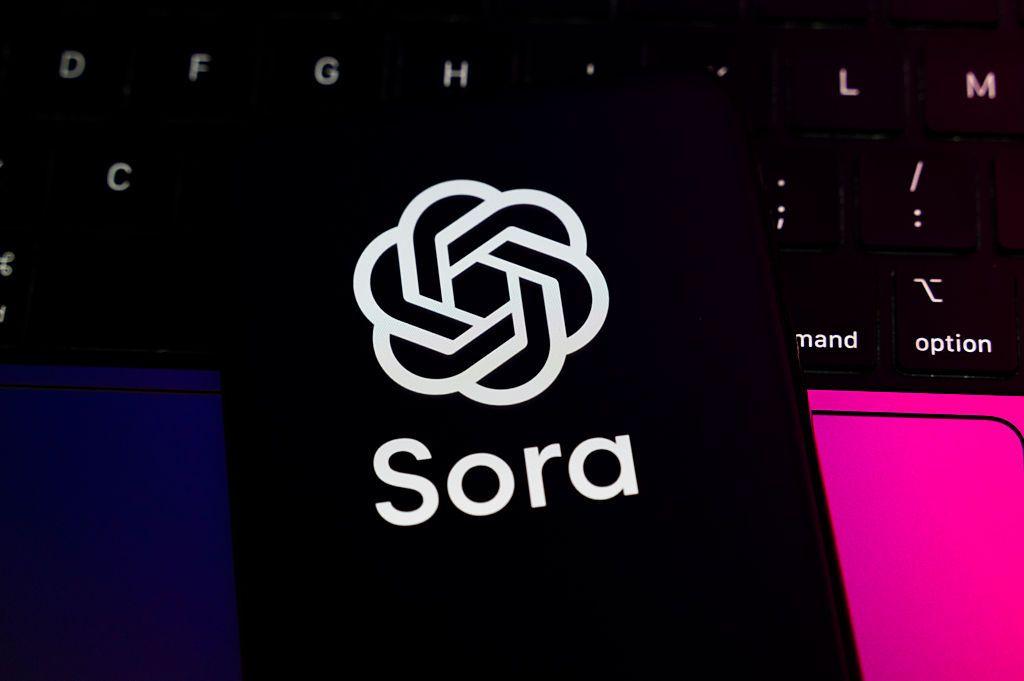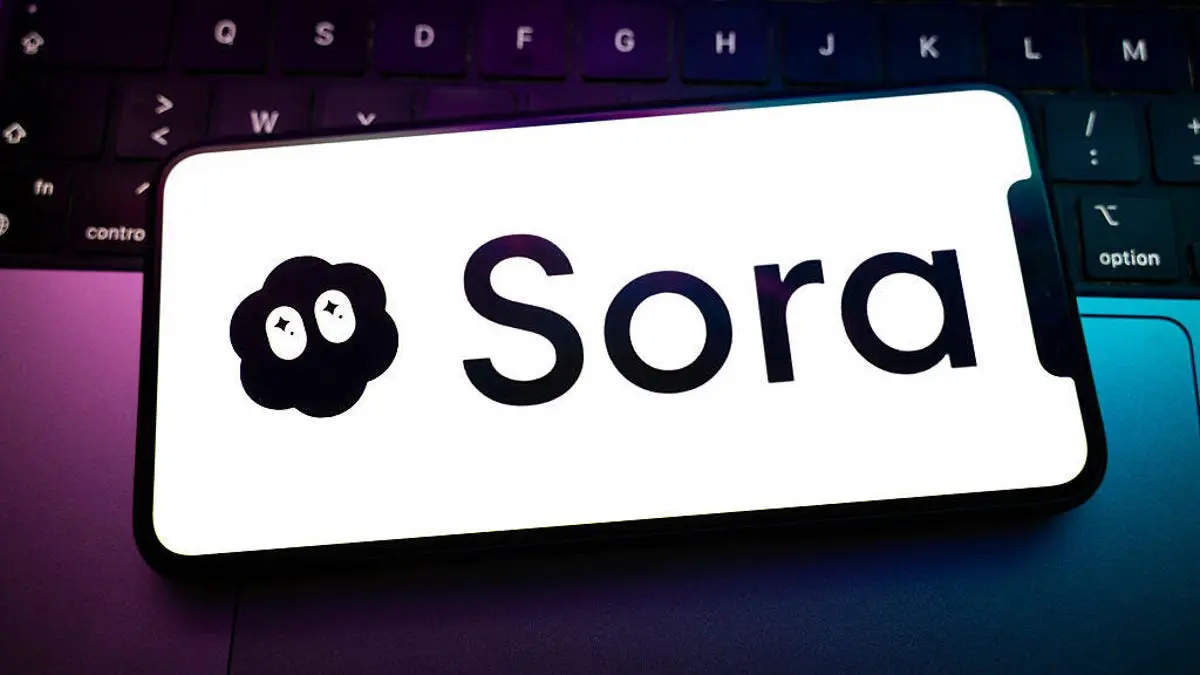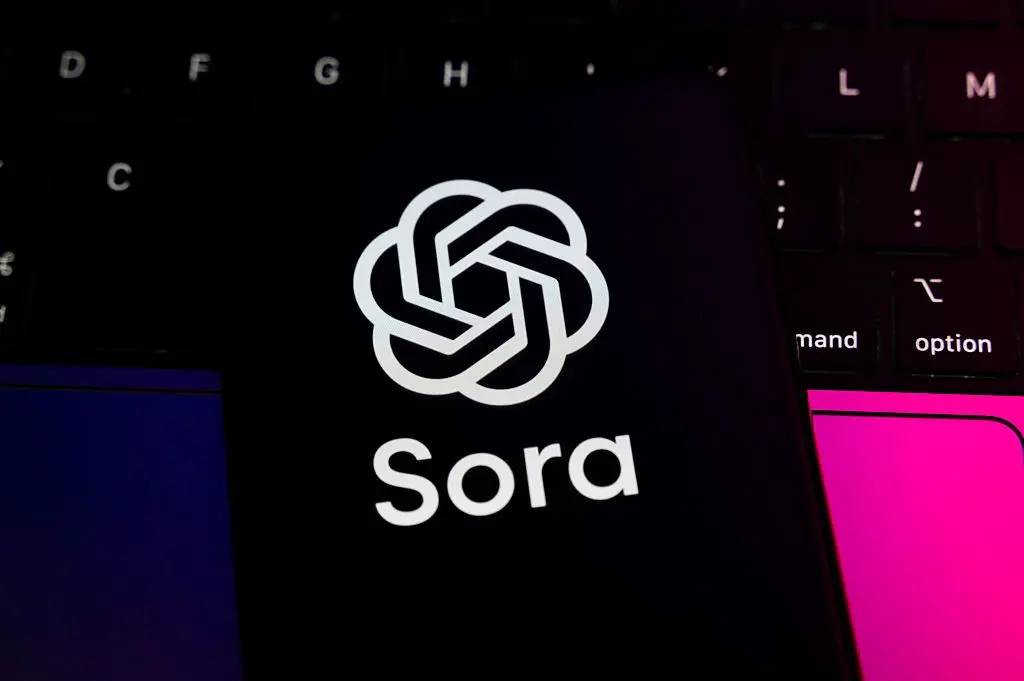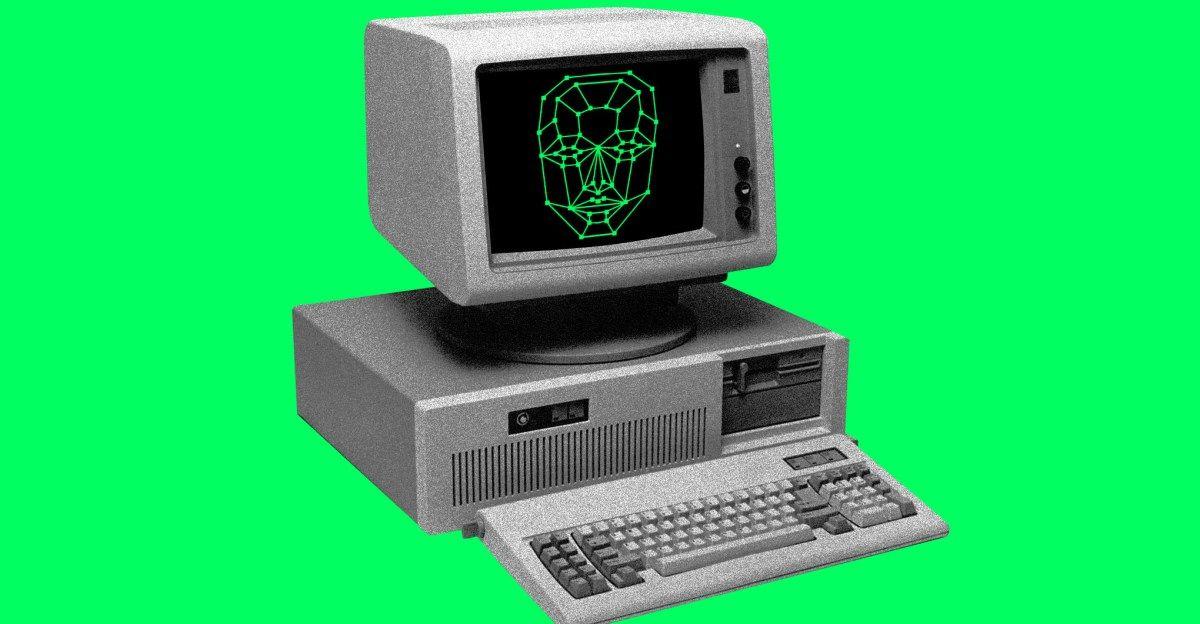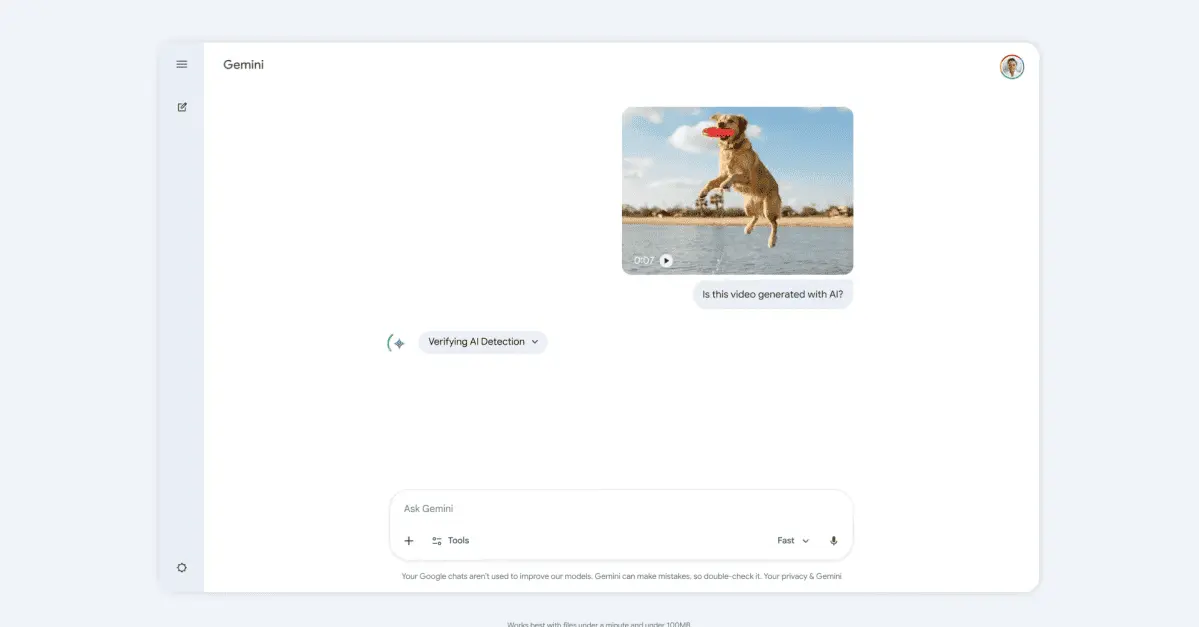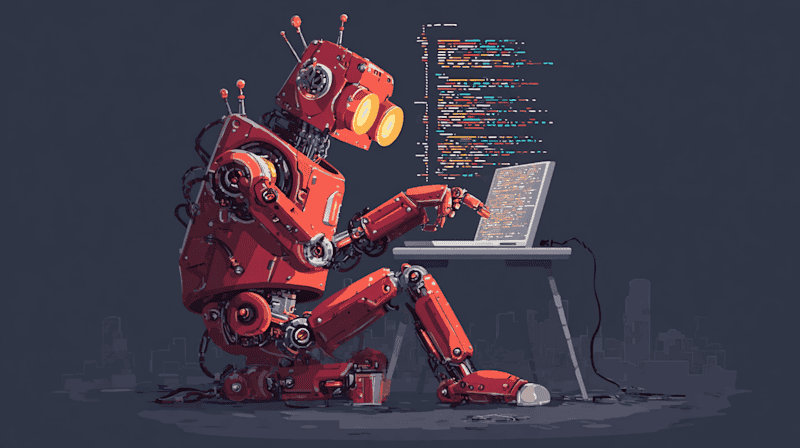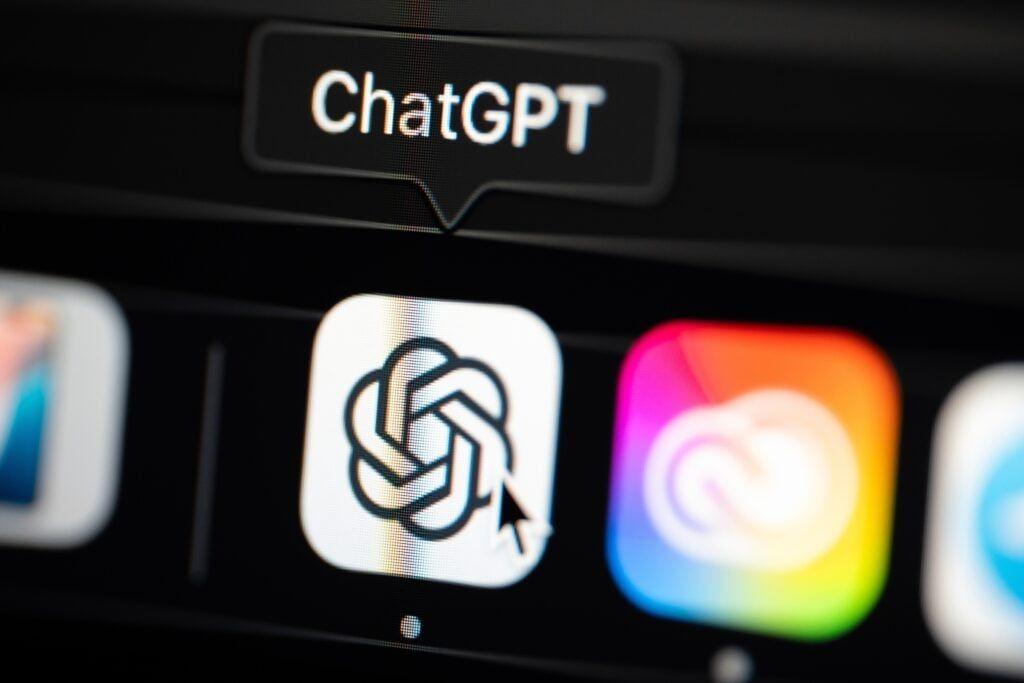OpenAI's Sora 2: Revolutionizing AI Video Generation and Stirring Controversy
14 Sources
14 Sources
[1]
OpenAI's New Sora App Lets Users Generate AI Videos -- And Star in Them
Despite early, and familiar, copyright growing pains, Sora may be the prelude to AI-generated on-demand TV and movies I didn't think it would happen like this. I imagined Disney being first, testing artificial-intelligence-generated episodes using characters from libraries it licenses or owns. In an article last January, I wrote that AI would eventually let us generate new episodes of favorite series, casting our favorite stars -- even those long gone, like Marilyn Monroe -- in shows such as Game of Thrones. When I tested out OpenAI's Sora 2 after its release on October 30, it gave me just that -- Monroe as a dragon-riding Targaryen reading Scientific American. (Watch the video here.) Though AI-generated TV on demand hasn't arrived yet, if the videos I've seen in Sora's feed are any indication, users are hell-bent on creating it. Unlike the original Sora, Sora 2 isn't a mere video-generation platform; it's a social app with a TikTok-style feed of short AI-generated clips, and it allows you to authorize a "cameo" of yourself so friends can drop your likeness into their skits -- and to revoke it later once you've seen too many videos of yourself fleeing police or crying on game shows. Sora 2 has remarkable interpretive powers. For instance, my short prompt asked for a woman who looks like Monroe riding a dragon while talking about how she would rather be a scientist than a dragon-riding, incestuous Targaryen. Though I offered no script, Sora 2 generated one that was surprisingly witty. Just as ChatGPT can generate entire screenplays in response to short, unspecific prompts, or follow long, detailed instructions, so too can the new Sora invent a complex scene on the basis of either. If you're enjoying this article, consider supporting our award-winning journalism by subscribing. By purchasing a subscription you are helping to ensure the future of impactful stories about the discoveries and ideas shaping our world today. Within hours of Sora's launch, the critics condemned it as "slop," even as they generated their own content with the app, such as when YouTube's Fireship channel posted a Sora-made clip of OpenAI CEO Sam Altman screaming, "Eat your slop, piggies," to people kneeling before bowls of pig slop. As thousands of users began experimenting with the app, the sloppiness took many forms: surreal memes, mash-ups, inside jokes -- and especially riffs on Altman. Altman stealing someone's art and running for the door or peering through blinds in fear that Elon Musk was coming to take over OpenAI. People also began making clips of South Park that they compiled into episodes and posted elsewhere. Twice I ran across videos of the animated characters Rick and Morty cooking blue meth like Walt and Jesse in Breaking Bad. Though OpenAI initially said it would allow the use of copyrighted characters unless rights holders opted out, a wave of copyright complaints during the first two days prompted OpenAI to implement restrictions. Across social media, even as some people bemoaned AI "slop," others complained that Sora was already dead -- too throttled for any real creative expression. If the mood feels familiar, it's because we've seen this before. Early YouTube was an infringement engine until a lawsuit pushed it to fingerprint every upload. Twitch.tv and TikTok had their own reckonings with copyright violations, and most of social media was a smorgasbord of sloplike content -- food pics, filtered selfies, meme farms and oversharing. For the platforms that survived, the arc bent from chaos toward systems that regulated the use of copyrighted material and rewarded creators for producing original work. Sora will need the same boring plumbing if it wants to graduate from novelty. But history tells us that platforms can evolve. In a blog post this week, Altman explained that Sora is working to give "rightsholders more granular control over generation of characters" and find ways to monetize the platform and allow fan fiction. But what will make people keep using Sora after the novelty wears off? Personality is the driver behind much of today's media -- YouTubers, podcasters, old-fashioned celebrities and even animated characters. Sora's "cameo" system hints at an evolving etiquette of consent and co‑ownership using the images of real people. Indeed, Altman, by virtue of the sheer number of spoofs, appears to have joined the pantheon of comic figures alongside South Park's Eric Cartman and Family Guy's Peter Griffin. (To prevent unauthorized deepfakes, the platform blocks image uploads of real people who aren't the user and watermarks all videos.) For all the talk of AI-generated slop, what we might be underestimating is not the power of AI but that of human creativity. People working at Mattel and Toys "R" Us are already using the technology to prototype characters, and Sora users can do the same with the figures from their own imaginations. Some are generating mini episodes of alien invasion or Mars colonization; and with better tools and dedicated channels, this sort of work could grow into monetized series with their own lore and beloved characters. Other companies aren't far behind: Meta recently released "Vibes," an AI-generated social media feature that doesn't include voices. Google's Veo 3, which generates video with sound, offers the far less interactive Flow TV, and YouTube is already integrating AI tools to support creators. I could easily imagine Disney or Netflix with a similar interface to Sora's that would let viewers spin off side stories from series and create prequels and sequels -- and, above all, share those creations so that they can watch and remix one another's contributions. But users will crave more than fan fiction, and Sora seems well placed to become TV on demand, enabling them to design original content that they want to watch and share. If history is a guide, the social media platforms that thrive are those that support and protect human creativity -- in this case, the creativity to make the TV and movies you always wished existed.
[2]
Just How Good Is Sora 2 at Faking Reality? I Put It to the Test
Our team tests, rates, and reviews more than 1,500 products each year to help you make better buying decisions and get more from technology. Earlier this year, Google Gemini's Veo 3 model brought realistic AI video generation with audio to the mainstream. However, Veo 3 now faces serious competition from OpenAI's Sora 2, which offers the same capabilities. Here, I explain how you can access Sora 2, what it actually does, and if it's any good. What Is Sora? Sora is ChatGPT's AI video generation model, but it's also accessible as a dedicated app separate from ChatGPT. It's been around for a while, but it couldn't generate audio nor match the quality of Gemini's Veo 3 model until the recent Sora 2 update. OpenAI didn't just update Sora, though; it also updated the Sora app for iOS, which is basically TikTok for AI-generated videos: You can scroll through an infinite selection of 10-second-long videos that others have made with Sora, complete with comments and likes. Where Is Sora Available and How Do You Access It? Sora is currently available on iOS and the web. However, it's invite-only at the time of writing. If you have an invite, you can use it on both platforms. According to OpenAI, Sora 2 is initially available for free with generous limits, but I suspect you will eventually have to pay for a premium plan to use it regularly. If you pay for ChatGPT's $200-per-month Pro plan, you get access to Sora 2 Pro, which is an experimental, higher-quality version of Sora 2. Sora 2 Pro is currently accessible only on the web, but OpenAI plans to bring it to the iOS app soon. If you enjoyed using the original Sora, Sora 1 Turbo is still available, along with all the content you generated with it. However, it's unclear how long this will be the case. Considering the backlash OpenAI experienced after removing legacy models with the release of GPT-5, however, I expect Sora 1 Turbo access to stick around for a while. What Can (and Can't) You Do With Sora? First and foremost, Sora generates AI videos. These can be pretty much anything, such as an anime scene you dream up or a fictional clip of a content creator playing Minecraft. Simply write a prompt, and Sora creates a video in about a minute or two. Once you generate a video, it exists as a draft that you can then publish, making it accessible in Sora's TikTok-style feed. Sora has a couple of other interesting features. For one, you can generate videos based on images you upload. You currently can't create videos based on images with real people, but OpenAI's documentation strongly implies that capability is coming eventually. In the meantime, you can generate videos of real people with the Cameo system. Essentially, you record a short video clip of your face and voice as your Cameo. Then, you can generate videos with yourself in them. Depending on your privacy settings, you can also allow other people to generate videos with your Cameo. For example, if you want to make a video with OpenAI CEO Sam Altman, simply include @sama in your prompt. For instance, "@sama explaining why Sora is better than Veo 3." Although Sora prohibits sexual content (unlike Grok's Imagine AI video model), there's still a small chance that Sora will generate it anyway. Similarly, Sora restricts any content that it deems violent. You can refer to OpenAI's guidelines on what you are and aren't allowed to do with Sora for the specifics. However, these guidelines are somewhat confusing. For instance, even though Sora doesn't allow you to create videos of real people without their explicit permission, clips of dead celebrities and historical figures currently dominate Sora. Popular Sora videos include Bob Ross and Jesus, among others. First Impressions of Sora: Is It Any Good? I tested Veo 3 when it launched, and using Sora has been a very similar experience. In short, Sora 2's AI audio and video quality can be quite good. "Can" is the operative word, though, as it's easy to encounter distortion and errors in your videos. That said, with a little prompt tweaking and multiple generations, it's not difficult to make something impressive. Compared with the original, Sora 2 is much better at rendering complex motion. For example, the original version couldn't generate a video of someone solving a Rubik's Cube without major issues. Sora 2, though, does a significantly better job. The audio quality of Sora 2 videos is a bit hit or miss in my experience. Sometimes, it sounds great, but other times, the audio has a robotic, uncanny quality to it. It performs about the same as Veo 3 here. If you use a Cameo to generate a video of yourself, the results don't disappoint. It's hard to describe the vaguely unsettling feeling of seeing a lifelike facsimile of yourself doing and saying things you've never done, but it's undeniably impressive. However, Cameo-based videos aren't free of the issues I mentioned above, so you still need to do some prompt engineering and run through multiple generations to make something really believable. Sora's App: AI TikTok The Sora app is unique in the AI video space. (Veo 3 doesn't offer any sort of social component.) OpenAI is actively working to transform the Sora app into the TikTok of AI-generated videos. Some of these videos are undeniably amusing, and I appreciate the ability to comment on them as well. Still, it's hard to appreciate that function too much when the majority of the comments are some variation of "wow" or someone begging for followers, at least at the time of writing. I'm grateful that OpenAI created a social media platform for AI-generated videos, because it may help reduce the AI content I see on my TikTok and YouTube Short feeds. But, on the other hand, while some of the technology at play here is cool, I can't help but wonder what the point of it all is: Is the ability to generate AI meme videos really worth building 60 football fields' worth of AI infrastructure every week or uprooting rural families? Is Your Data Safe With Sora? Since Sora is an OpenAI product, your data is as safe as it is with ChatGPT. In its privacy policy, OpenAI outlines how it collects significant amounts of data and uses that data to train its models by default. OpenAI doesn't specifically mention Sora in its privacy policy, so there's little reason to believe that it handles Sora-related data in a meaningfully different way. How well does OpenAI secure the data it collects? Not very. For example, someone hacked OpenAI in 2023, news of which only broke in 2024, while OpenAI remains a target for hackers. Similarly, Sam Altman has said that your conversations with ChatGPT can be used against you in court, which isn't very encouraging from a privacy perspective, even if it's not surprising. In general, I don't recommend sharing anything too sensitive with OpenAI. When it comes to your facial and voice data within Sora, OpenAI tells PCMag that "uploaded Cameos are kept by OpenAI to use for new Sora videos, and are encrypted at rest and in transit." It also says that "uploads are automatically deleted within 30 days after users delete them." You can delete your Sora account, but currently, this is not possible unless you also delete your ChatGPT account. You also can't sign up for an account with the same email address after canceling an existing account associated with it. OpenAI is currently working on a way to let you delete just your Sora account. Should You Use Sora? Just as with Grok's NSFW anime companions, you should check out Sora if you're looking for a little entertainment and want to see what's possible with the technology. Assuming you have an invitation, of course. Beyond that, though, it's hard to see Sora as much more than a curiosity. Sure, you can create some meme videos to send your friends, but it likely only takes so many AI videos before you and your buddies move on to something more exciting. Sora will also inevitably be weaponized: A world where you can create lifelike videos, with audio, of anything in just a minute or two for free is a world where seeing is not believing. So, I suggest never taking any video clips you see online too seriously, unless they come from a source you can absolutely trust.
[3]
We tested OpenAI's Sora 2 video generator to find out why Hollywood is freaking out
We tested OpenAI's Sora 2 AI-video app to find out why Hollywood is worried The launch of OpenAI's updated Sora 2 AI video service kicked off another round of anxiety among musicians, actors and other content creators. Sora allows users to generate short videos for free by typing in a prompt. The app is only available on iOS devices and is limited to invitees, meaning people need a code to access it. Still, Sora has climbed to the No. 1 spot in Apple's App Store, and OpenAI said this week it hit 1 million downloads in less than five days after launch. Major Hollywood groups like the Motion Picture Association have objected to OpenAI's copyright policies, and top Hollywood agencies are calling it "exploitation." That's led to changes in how the model handles prompts for certain sensitive categories of generated content. CNBC's Julia Boorstin got access to Sora 2 and tried prompts like "show me a video of a fat orange cartoon cat eating lasagna" and "create a superhero that wears a black cape and is saving a woman from a burning building." Some of the prompts failed due to copyright infringement, while others worked. Watch the video to see what happens when we put Sora 2 to the test.
[4]
OpenAI's viral video generation app Sora inches closer to an Android release
OpenAI recently took the wraps off the Sora 2 video generation model, introducing significant enhancements over its first-gen counterpart. The ChatGPT developer also launched a standalone Sora app at the end of September. However, the app is available only to Apple iPhone users. Well, it has been nearly two weeks, and OpenAI evidently wants to waste no time in letting the Android audience join the action. As noted by our founder Artem Russakovskii on X/Twitter, the Sora app has just gone up on the Google Play Store, but you can't download it just yet. The video generation app for Android is accepting pre-registrations exclusively for users in the US and Canada via the Play Store. Similarly, the Sora app for iPhone is also available only to people in these two regions. Sora is more than just a video generation app You will still be able to see the listing if you live outside the US or Canada, albeit with a "This item isn't available in your country" disclaimer. We're getting a glimpse of what the app will look like in action, though the images here are identical to the screenshots you'll find on the Sora App Store page. The Sora smartphone app is not just an ordinary text-to-video generating tool. As the company noted in its announcement, there's also a big emphasis on giving users a "customizable Sora feed" of clips, similar to social media platforms like TikTok or Instagram. To this end, the app contains a feature known as "cameos," which lets you or your friends use each other's likenesses in AI videos. This requires "a short one-time video-and-audio recording in the app to verify your identity and capture your likeness," the company notes. On the privacy and safety front, a support document states that users can manage who can use their likeness in cameos. One might say Sora is somewhat late to the party, given that Android users have been able to generate videos using Google's powerful Veo model for a while now. The recent release of Veo 3 was a game-changer for Google, as it introduced multiple advancements to the model, including audio generation.
[5]
Sora 2 is coming to Android -- here's when you can download it
Sora 2 has had a monumental rise in popularity since its launch, exceeding a million downloads early in its release. While it was originally only available for Apple users, Android users could soon be in luck. Artem Russakovskii, the founder of Android Police, posted on X, stating "OpenAI's Sora Android app just popped up on the Google Play Store. It's not available yet, but open for pre-registration in the U.S. and Canada". While there are plenty of duplicates of apps like Sora, this one was uploaded by the official OpenAI account. It is not clear when this will be fully available to download, but its appearance in the store means it likely won't be long. Like a lot of AI launches, this appears to be first coming to the U.S., as well as Canada, before making its way to other regions around the world. Currently, Sora 2 is also only available to those who have been invited or received a special code. This is likely to reduce the load on the system. AI video generation can be taxing to servers, and OpenAI has a habit of getting overwhelmed during launch periods. This means that, even if you're in a region where Sora 2 is available on Android, you will likely also need to get an invitation to use it. Codes can be sent by other people who are already on Sora 2, or you can wait until the app is made available to everybody. Sora 2 has been in the works for a while. The original version of the model launched way back in December 2024. Since then, other more impressive AI video models have come and taken the stage. With Sora 2, OpenAI has pulled back some of its crown, mostly due to the fact that Sora 2 allows users to generate videos of real characters and people. This has since been tightened slightly, with people having to give permission for their likeness or artwork to be used. Like its biggest competitors, including Gemini's Nanobanana or Kling 2.5 Pro, Sora 2 offers a noticeable improvement in quality. Videos look more realistic than ever, and offer a clearer understanding of how physics would play out in different scenarios. The challenge for OpenAI now is to find a way to keep Sora 2 affordable. This kind of technology can be expensive, especially with the numbers OpenAI will be drawing in with this tool.
[6]
A Sora 2 launch on Android looks to be imminent - it just showed up on the Google Play Store
Sora 2 has been a smash hit since the AI video generator and TikTok-style social media platform launched on the iPhone a couple of weeks ago, and it looks as though Android users are going to be able to join the party very soon. As spotted by @ArtemR (via Android Police), a listing for Sora 2 has now shown up on the Google Play Store. For now though, you can only preregister your interest, if you're in the US and Canada - the download isn't available. Bear in mind as well that Sora 2 remains invite-only on iOS, at least for the time being, and will presumably be so on Android. There is however a chance that the Android launch could coincide with the app being made available to anyone who wants to sign up. Sora and ChatGPT developer OpenAI is no doubt trying to manage demand, with company CEO Sam Altman recently saying that users are creating many more videos than initially expected - and they all come with a significant cost in terms of processing. Even though access to Sora 2 remains restricted for now, that hasn't stopped AI video clips generated by the app being spread far and wide across the internet, featuring all kinds of wild and surreal scenarios. We've actually been able to try it out for ourselves, which has left us both impressed with the capabilities of Sora 2, and rather worried about what it means for the future of video content and the web in general. The success of the app has once again highlighted the legal and ethical implications around creating fake videos with real people in them, whether that's a celebrity or someone in your family - and that debate is likely to run and run. Once you have an invite, the app is free to use, with what OpenAI describes as "generous" limits on how many videos you can create. That's helped Sora 2 shoot to the top of the Apple App Store charts, which may well soon happen on Android too.
[7]
OpenAI's Sora Is in Serious Trouble
Just over a week ago, OpenAI launched its latest text-to-video generating app, a TikTok-like experience dubbed Sora 2 that lets users churn out a tidal wave of AI slop. It didn't take long for users to use the app to generate videos of copyrighted and widely-known characters, from OpenAI CEO Sam Altman barbecuing a Pikachu and full episodes of "South Park" to SpongeBob SquarePants cooking up blue meth crystals in the style of AMC's iconic "Breaking Bad" TV series. The hype was so immense that Sora rocketed to the top of Apple's App Store rankings in a matter of just two days. After all, who wouldn't want to see Super Mario involved in a high-speed police pursuit? But it's quickly turned into a rocky road. In the days leading up to the launch, the Wall Street Journal reported that rightsholders would have to "opt out" of having their copyrighted material shown in the app -- only for OpenAI to reverse course soon after the launch. "We will give rightsholders more granular control over generation of characters, similar to the opt-in model for likeness but with additional controls," Altman wrote in an update on his blog last week. The cat was already out of the bag, though, sparking what's likely to be immense legal drama for OpenAI. On Monday, the Motion Picture Association, a US trade association that represents major film studios, released a scorching statement urging OpenAI to "take immediate and decisive action" to stop the app from infringing on copyrighted media. Meanwhile, OpenAI appears to have come down hard on what kind of text prompts can be turned into AI slop on Sora, implementing sweeping new guardrails presumably meant to appease furious rightsholders and protect their intellectual property. As a result, power users experienced major whiplash that's tarnishing the launch's image even among fans. It's a lose-lose moment for OpenAI's flashy new app -- either aggravate rightsholders by allowing mass copyright infringement, or turn it into yet another mind-numbing screensaver-generating experience like Meta's widely mocked Vibes. "It's official, Sora 2 is completely boring and useless with these copyright restrictions. Some videos should be considered fair use," one Reddit user lamented. Others accused OpenAI of abusing copyright to hype up its new app. "This is just classic OpenAI at this point," another user wrote. "They do this s*** all the time. Let people have fun for a day or two and then just start censoring like crazy." The app now has a measly 2.9-star rating on the App Store, indicative of growing disillusionment and frustration with censorship. Others continue to find ways around OpenAI's guardrails, generating videos from Super Mario and Wario collaborating to save Princess Peach to Courage the Cowardly Dog appearing in Ring doorbell footage. It's an eerily familiar game of cat and mouse, reminiscent of the earlier days of ChatGPT. "We want to apply the same standard towards everyone, and let rightsholders decide how to proceed," Altman wrote in his blog. "There may be some edge cases of generations that get through that shouldn't, and getting our stack to work well will take some iteration." How OpenAI's eyebrow-raising ask-for-forgiveness-later approach to copyright will play out in the long term remains to be seen. For one, the company may already be in hot water, as major Hollywood studios have already started suing over less. Case in point, Warner Bros. Discovery sued AI image generator Midjourney for infringement last month, joining Disney and NBCU. Anthropic has also had to pay $1.5 billion as part of a copyright infringement settlement after getting caught training its large language models on copious amounts of pirated material. In an apparent effort to save face, Altman claimed this week that many copyright holders are actually begging to have their characters appear on Sora, instead of complaining about the trend. "In the case of Sora, we've heard from a lot of concerned rightsholders and also a lot of rightsholders who are like 'My concern is you won't put my character in enough,'" he told the a16z podcast earlier this week. "So I can completely see a world where subject to the decisions that a rightsholder has, they get more upset with us for not generating their character often enough than too much," he added. Whether most rightsholders would agree with that sentiment remains to be seen. It's been a chaotic week and a half -- and signs point towards OpenAI trying to roll with the punches instead of preparing a coherent plan ahead of time.
[8]
Sora 2 is taking over the internet: 6 best videos we've seen so far
It's been a long time since OpenAI launched its original Sora model, creating one of the first AI video generators on the market. Since then the competition has come in thick and fast, knocking OpenAI off its pedestal. OpenAI has come back with a vengeance, launching Sora 2. Not only is it better, faster and utilizes a better understanding of physics, but it even lets you create real people and utilize themes from TV shows and films. That has been a controversial choice, allowing for deepfakes and permitting users to generate lots of videos of OpenAI CEO Sam Altman. However, in a crowded market it also helps OpenAI to stand out. We've been testing it ourselves and will soon fill you in on our own experiences with the tool, but we've also been seeing what the internet has been up to and it's a trip. To show you what I mean, here are our favorite videos generated using Soma 2 so far. Video produced by D_studioproject Sure, in theory a group of blurry videos of people falling over isn't that impressive. And yet, it kind of is. Here, Sora is able to recreate videos with motion and a lot of movement, while also achieving a blurred video effect that would be seen in low cost cameras. If you look closely, it is still clearly AI. Objects blur in the background or the clock timings don't quite add up. But compared to the AI video generations Sora was making before, this is a massive jump. Video produced by Halim Alrasihi This is one of the more... appropriate videos that has used Sam Altman in Sora 2. It also displays an interesting concept that I've not personally seen done in AI video generations yet. By giving the generator both an outfit and a person, you can see how that outfit might look on them. While a lot of Sora 2 generations seem to be leaning towards comedy or simply being very unhinged, this shows the practical capabilities it could have in the future. Video produced by user Skirano Where the above prompt shows how useful Sora 2 could be, this one shows the complete opposite end of a spectrum. Who knew we needed an alien version of Masterchef on our TVs. This is also a great example of how well the AI sound generation works alongside the video. Is it slightly insane? Of course. But is it brilliant? Obviously. "The foam tastes like battery acid" in that aggressive celebrity chef voice and a gentle tear falling at the same time is an Oscar worthy performance. Video produced by AllarHaltsonen Who says you need to spend hundreds of thousands of dollars on a car advert? This Sora 2 video creates a new version of the Lamborghini Urus, complete with a Nike collaboration. The car looks realistic, it is driving according to the laws of physics (which is fairly new to AI video) and the voiceover fits the style that we all know and love from the many car adverts on TV. Video produced by Skirano It's a dog skydiving... what more do you want? This video especially appealed to me, having spend a long time trying to get the original Sora model to create someone skydiving. It was a complete mess, with limbs flying everywhere, facing morphing in and out and parachutes disappearing mid-fall. Here, everything makes more sense. The dogs ears flap in the wind, the person is falling in the way we see skydivers fall, and you even see the parachute open at the same time as the man announces it. While a more realistic sound for this video would just be an unbearable amount of noise and muffled voices, it is surprisingly accurtate in audio. Video generated by BrentLynch While some are using Sora to create videos of dogs skydiving and blurry fail videos, others are making blockbuster movie clips. This feels like something pulled straight from Mad Max or any other dystopian movie. While there are still hallucinations, most notably in the stickers on the car changing, it otherwise looks incredible. The facial features and the way the hair moves feels incredibly natural. There is a lot going on in the background, which is something that would normally immediately cause issues for a video generator, but here it all works fine. Like the other clips, the audio generated fits the theme and sounds quite impressive.
[9]
I tried Sora 2 - I love it and it's about to ruin everything
The hottest new club in town is the Sora 2 app. It has Albert Einstein, Marilyn Monroe, Sam Altman, me, maybe you, and Jake Paul. Not one is real; everything is weird, and it's an astonishing accomplishment that is rightfully freaking out many actors, celebrities, and normies. I've been using it for a little while and, as is the case with most good social media platforms, I can't seem to stop, even as I know that it's generating endless volumes of AI slop and might be helping to boil the ocean. Even as it breaks download records, the Sora app is still mostly invite-only. That has not stopped a tsunami of videos featuring Sora app watermarks from appearing on TikTok, Instagram, Reels, and YouTube. I've tried most every generative AI under the sun, including the similar but, for now, possibly less powerful Gemini Veo 3. Both video models can produce a realistic video with synced audio based on your prompts. Only Sora 2, though, lives in a social media app. I couldn't seem to find an invite code, so I sent more than a few pleading emails to OpenAI. Then, suddenly, I opened the app yesterday, and I was in. As I see it, the most important part of the onboarding process is creating your Sora 2 Cameo. This is your photorealistic video avatar, basically an AI video puppet of you that the platform can manipulate. Moments after I signed in with my ChatGPT login, the Sora app guided me to the Cameo creation process. It's fast. You start by setting up your phone so it can record you. I didn't try to put my entire body in frame, mainly because Sora 2 didn't request it. Basically, the capture was of the upper part of my body. Sora 2 asks you to repeat the three numbers that appear on screen. This is to capture your voice print, which will be used for future generated videos. Sora recommends a quiet space so that it can clearly hear you. We have small meeting booths in the office, so I used one of those and tried to speak clearly. My first effort failed, so I tried again. I did not, by the way, pay much attention to what I was wearing, which, in retrospect, was a mistake; The gingham shirt I wore is now my default outfit in all Sora videos unless I specify a different one. The app also recommends that you don't wear shaded glasses or anything that might obscure your face. Finally, Sora asked me to look to the left and look up. These steps are all it needed to generate a believable "Lance Ulanoff Cameo". Sora 2 asks you up front if you want to share your Cameo with Everyone, Mutuals, People I Approve, or Only Me. I ended up choosing the "Only me" because I didn't want my Camea appearing in other people's generative videos, even if that is kind of Sora 2's secret sauce. OpenAI CEO Sam Altman chose to make his Cameo avatar open to Everyone, which is how I created the clip of him and me at the Grand Canyon. Social media star and boxer Jake Paul did the same. You also have the opportunity to set restrictions for how your Cameo can be used in other videos. Since I didn't open my use up to anyone, I didn't set any parameters. As you enter the Sora 2 content stream, the app pops up this warning, one that I'm thinking of printing out and posting everywhere: "You are about to enter a creative world of AI-generated content. Some videos may depict people you recognize, but the actions and events are not real." Like other social media platforms, you have a "For You" vertical video feed that you can swipe through. It's entertaining but can get old fast since so many people are making themselves fly in front of video doorbell feeds or having conversations with Marilyn Monroe, Albert Einstein, or Sam Altman. The better feed might be "Latest" since it tends to feature more creative ideas. The real fun is seeing what you can create and sharing it instantly with others. It, along with Meta's less powerful Vibes are the first social spaces that focus exclusively on AI-generated video, which means you also get to like, comment, and share them with others, and follow the creators. With my Cameo set, I selected the big plus sign at the base of the app, chose my Cameo from the side-scrolling list of available ones, and wrote a prompt about mowing a lawn that turns into water. I included just one line of dialogue, 'Oh, no, not again," The results were shockingly good. My Cameo avatar looks like me, and even though I didn't do a full body scan, Sora 2's algorithms seem to have figured out that I'm kind of an old skinny guy. Another video I created of me golfing on the moon is also effective, even though I'm mostly hidden my a space suit. When the camera shows my face, it looks like me in the Apollo 11-style gear. Creating Sora 2 videos of yourself is fun, but things get a little wild when you start selecting other available Cameos to star in your 9-second videos. Those seconds turn out to be ample time for a few actions and an exchange of dialogue. If you ever learned how to squeeze a script into a 6-second Vine, you'll find Sora's 9-second limit almost generous. For my Sora costar, I chose Sam Altman, who, as I noted, has made his avatar freely available. I described the location (Grand Canyon), the three lines of dialogue, and the action, which included Altman handing me a goat. Part of Sora 2's power is that it gets inference. I do not have to go into detail about who says what, just mention the first name. There was no need to list out the camera shots; Sora 2 chooses them for you. And since there was time left over, Sora 2 just had me laughing as I held the baby goat. With five likes, this is currently my most popular Sora video. Video generation can take a few minutes, and I had one failure when I tried to load an image of Marilyn Monroe and asked Sora to build a scenario around her. Sora listed it as a Content Violation, a notion I find odd, since I've seen so many Sora videos featuring living and deceased actors whom I do not think have given permission, or whose estates have given permission. As we wrote here, Sora 2 is supposed to be an all-opt-in platform. Without your permission, your Cameo can't appear in anyone else's AI video. However, the controls seem fuzzier for celebrities. There is currently a flood of Sora watermarked videos on TikTok featuring Marilyn Monroe, Gene Wilder, and Fred Rogers doing things he never did on Mr. Rogers' Neighborhood (though I kind of enjoyed the one of him with Tupac Shakur). I'm especially disturbed by the Sora AI videos that appear to feature Dr. Martin Luther King making speeches about Sora. Even though the system controls which Cameos you can use, it does not stop you from animating photos of random people. I grabbed a photo I took of an industry exec and made him run off the stage in fear. I have no plans to post that because he never gave his permission, but you can see where all that is leading. From what I can tell, Sora's ability to police this content is a work in progress. When I mentioned "Marilyn Monroe" and "Albert Einstein" in subsequent prompts, the Sora app didn't hesitate, but the results are just AI people who vaguely resemble the real people. No estate will be bothered by these depictions. I expect that, over time, Sora 2 and the app will get even better at policing this stuff... until Sora 3, which likely breaks those guardrails until we wait for the inevitable mop-up. In the meantime, I can't seem to stop cooking up prompts and feeding them into the Sora app. The dopamine rush of seeing your inane idea "fleshed out" in 9 seconds of AI video is hard to describe. You're excited, entertained, shocked, and a little appalled. I'm clearly not the only one, and the social-media-fication of Gen AI video means that we now have algorithms pushing us to come back, make more, and share with friends and the world. This is all heading to a not-so-good place. The amount of AI slop has increased exponentially since Sora's (and maybe Vibes') arrival, and it shows no sign of slowing down. AI content is overwhelming real content and information. If you mistakenly pause for too long or fully watch an AI video on TikTok, your feed will be flooded with them. So, yes, I like the Sora app; it's powerful, smart, fun, and sure to ruin everything.
[10]
OpenAI social app Sora rolls out as standalone platform with Sora 2
Artificial Intelligence OpenAI social app Sora rolls out as standalone platform with Sora 2 Tuesday, September 30, 2025 Trey Abbe Short form video generation takes center stage as the OpenAI social app Sora adds identity-based cameos and parental controls, launching alongside the Sora 2 model for more realistic AI-generated video. OpenAI has launched a new social platform called Sora, designed around AI-generated short form video. The release coincides with Sora 2, the company's upgraded video generation model. Together, the app and the model represent a move into the social media space, where OpenAI is positioning its technology against platforms such as TikTok and Instagram Reels. Introducing the Sora 2 model Sora 2 is the successor to OpenAI's earlier video generation system and was developed to address limitations in realism. The company notes that previous models often created unrealistic results, such as objects teleporting or morphing unnaturally. Sora 2 aims to follow the laws of physics more closely. Examples shared by OpenAI include sports clips where a ball rebounds correctly when a shot is missed, and scenes of skateboarding or gymnastics that respect natural movement. The improvements are intended to reduce the "overoptimism" of earlier AI models and to make content generated through prompts appear more authentic to viewers. OpenAI has also emphasized that Sora 2 is designed to create longer, more coherent videos that maintain logical continuity across multiple scenes. The Sora social app The new app serves as a distribution platform for Sora 2 videos. It allows users to generate, upload, and share clips in a feed organized by an algorithm, similar to the structure of other short video platforms. The app is invite-only at launch and is initially available in the United States and Canada on iOS. OpenAI has emphasized that the app is free to use. Monetization will come later through charges for additional video generations during times of high demand. Cameos and identity features A central feature of the Sora app is called "cameos." Users can upload a one-time video and audio recording to verify their identity and likeness. This enables them to insert themselves into AI-generated clips. Once verified, users can permit friends to include their likeness in other generated content, allowing multiple people to appear together in shared videos. The feature raises questions about control and consent. Although users can revoke access at any time, OpenAI acknowledges the potential for misuse if likenesses are shared without careful oversight. Cameos may also place pressure on OpenAI to maintain clear consent mechanisms as regulators begin paying closer attention to AI-generated identity use. Algorithmic feed and controls The feed within Sora resembles other short video platforms, but its recommendation system integrates data unique to OpenAI's ecosystem. User activity, location, past engagement, and ChatGPT conversation history can all influence suggested content. Users can turn off the use of conversation history if they prefer. To address younger users, the app includes parental controls. These are built into ChatGPT's framework and allow parents to manage direct messaging, restrict algorithmic personalization, and set limits on scrolling. The effectiveness of these measures depends on how familiar parents are with the technical settings. Safety considerations and challenges The combination of personal likenesses and AI-generated content creates new safety considerations. OpenAI has faced similar issues in its conversational products, and now must extend safeguards to video. Risks include the generation of non-consensual or deceptive clips, an area where current legal frameworks provide limited recourse. OpenAI states that user likenesses can be withdrawn at any time, but acknowledges that enforcement may be difficult once videos are shared. Broader concerns about synthetic media and its misuse remain part of ongoing debates across the industry. Researchers and policymakers continue to evaluate how tools such as Sora fit into wider discussions on deepfakes, copyright, and digital rights. Comparisons with TikTok and Reels While Sora is presented as a creative tool, its format positions it in direct competition with established platforms like TikTok and Instagram Reels. Unlike those services, which rely on user-filmed content, Sora centers on AI generation. This distinction may appeal to users who want to create visually complex clips without filming equipment or editing skills. At the same time, TikTok and Reels benefit from large creator ecosystems, advertising networks, and long-term user engagement. Sora enters a space where loyalty to existing platforms is strong, and its adoption will likely depend on whether generated video becomes a mainstream form of expression rather than a novelty. Industry analysts note that Sora's integration with ChatGPT data may create a personalized feed different from competitors, but this also raises questions about data privacy. Broader role of AI in media The release of Sora arrives during a wider expansion of AI into creative industries. Text-to-image tools, voice synthesis, and music generators are already available to consumers, and video is seen as the next step in this progression. Companies such as Meta and Google are also investing in AI-driven video, highlighting competition in the space. OpenAI's decision to launch Sora as a standalone app rather than as a feature within ChatGPT signals a commitment to testing AI in public-facing entertainment markets. The results of this experiment may influence how other technology firms approach the balance between AI creativity and consumer safety. Availability and expansion plans The Sora iOS app is available for download in the U.S. and Canada, with plans for expansion to additional countries. ChatGPT Pro users will have early access to the Sora 2 Pro model even if they do not receive app invites. By offering the app at no cost initially, OpenAI aims to encourage exploration of the system's capabilities. The company will monitor demand and begin charging for additional video generations only when necessary. While OpenAI has not disclosed a timeline for Android or web versions, future expansion is likely to include multiple platforms as adoption grows. Sora 2 model debuts as OpenAI social app Sora becomes standalone platform The launch of Sora marks OpenAI's entry into social platforms, moving beyond research and productivity tools into consumer-focused media. The integration of the Sora 2 model with a dedicated app highlights the company's strategy to combine technical improvements with public distribution. As the platform expands, its reception will depend on how users balance creative opportunities with the practical challenges of identity, safety, and trust in AI-generated media. - DRAFT COPY ONLY - Become a subscriber of App Developer Magazine for just $5.99 a month and take advantage of all these perks. MEMBERS GET ACCESS TO- Exclusive content from leaders in the industry - Q&A articles from industry leaders - Tips and tricks from the most successful developers weekly - Monthly issues, including all 90+ back-issues since 2012 - Event discounts and early-bird signups - Gain insight from top achievers in the app store - Learn what tools to use, what SDK's to use, and more Subscribe here OpenAI social app Sora rolls out as standalone platform with Sora 2, OpenAI, TikTok, Artificial Intelligence, Generative AI, Machine Learning, AI Tools, AI Video Generation, Social Media, OpenAI News, Content Creators Share
[11]
The first Sora 2 videos are hitting the web, and I'm both impressed and queasy
Wild and often wildly surreal videos made with the Sora 2 AI model appeared nearly immediately after OpenAI unveiled its capabilities, with clips including plenty of cute (and disturbing) ideas that might have been tried with the first Sora model or rivals like Google's Veo, Runway, or what's on Meta's Vibes. But there's no denying that Sora 2 brings a sharper realism to the visuals, and the synchronized sound and dialogue make the results more impressive in some ways than other video generators can match. That they're designed for a TikTok-style feed encourages viewers to buy into their reality. But that also makes the inevitable errors more notable, and more likely to induce uneasiness, even a little nausea - even someone used to AI-generated content might find some of Sora 2's videos to be a little too deep in the uncanny valley for comfort, as some of these examples show... Sora 2 is insanely good at stand up comedy from r/ChatGPT Firstly, this is a joke first told by Joan Rivers, so no points for originality here. The AI crowd does seem to enjoy the AI comedian's delivery. And the comedian seems pretty pleased with how it goes, despite his sweatiness under the synthetic lights. Without a close look at the watermark, I could believe this was only heavily edited with AI, not created with it from scratch. Sora2 is too much fun (spoiler warning for those who haven't read the book) from r/SoraAi Taking some steps into the uncanny (and potentially discomforting), this is a pretty tasteless joke. And it's either supposed to be an impersonator or it's a notable failure by the AI, not actually having holes in his feet as he claims. Still, the water splashing, and how it weighs down his robe is pretty realistic. Sora2. Im amazed from r/singularity I remember commercials like this when I was a kid, right down to the small print spoken super fast at the end. Admittedly, the words in those commercials were spelled correctly and in a human language, the children looked less demonic, and the Teenage Mutant Ninja Turtles didn't come off as somewhat threatening, but the degree to which it looks and sounds real is what makes the parts that are off-kilter seem especially unsettling. And that's even before you look at the ethical and legal ramifications of how easy it is to mimic copyrighted and otherwise protected intellectual property. The creator of this video pulled off something amazing in terms of the length, coherence, and narrative continuity of these video clips. But, Sora 2 made some of the faces made by Lucy, Ethel, and Ricky downright terrifying. As natural as Lucy holding a smartphone looks, Ricky's newspaper flaps in some unnatural ways (and that's before considering the topics under discussion. But all of these videos are made relatively quickly. If Sora 2's first videos are this good, the question is what happens with so much believable video that leaves an aftertaste of the uncanny? I'm not sure I'm thrilled with a world jammed with video blurring the line between synthetic and real so effectively - we may all need to rely on our Cowabunga Value!s to figure it out (watch the video above if you haven't already).
[12]
Here's how you can get your special invite code for OpenAI's Sora 2 app and explore its AI video features
OpenAI has launched Sora, a TikTok-style app filled with AI-generated videos, where users need an invite code to join. The platform lets people create hyper-realistic deepfake clips, including those of public figures like CEO Sam Altman, blurring the line between real and AI-made content. While Sora comes with a clear disclaimer that nothing on the platform is real, OpenAI is encouraging users to connect with friends through it. Access is limited, and you need an invite code from an existing user to join, a rollout that only began trickling out earlier this week. OpenAI is initially rolling out Sora in the US and Canada, prioritizing Pro users, with plans to expand to other countries soon. Once you receive an invite code, you can complete your Sora granting access through the mobile app or website. account setup. The app gives each user four additional invite codes to share with friends, OpenAI's latest app is built to create and share content entirely through its upgraded Sora 2 model. This marks a bold new direction for the company. The For You feed delivers an endless stream of algorithmically curated videos, where you can like, comment on, and share content, or create your own. Users can switch between friends and following feeds, and, in a unique twist, even filter videos based on their mood. Yet beneath the familiar social media interface lies a layer of surreal AI-generated oddities that set Sora apart. Cameos, Sora's standout feature, let users generate videos using someone's likeness and place them into virtually any scenario. When creating an account, every user can upload their own cameo and decide whether others are allowed to use their likeness in AI-generated videos. The Sora 2 AI produces videos so lifelike that it's often hard to tell they're not real. The upgraded model shines in generating dialogue, a new feature that has impressed AI enthusiasts and makes the platform more versatile for creators. The upgraded Sora 2 model handles complex prompts with improved reasoning, producing videos that are often indistinguishable from human-made content. Only subtle flaws, like jump cuts, clipped dialogue, or flawless skin, reveal their AI origin. Editing remains limited, requiring full regeneration, which can be slow and frustrating. OpenAI says Sora aims to foster human connection, with watermarks and metadata marking AI-generated content. Yet the platform's realistic deepfakes are easy to create and misuse, highlighting both the promise and the controversy of AI-driven social media in 2025.
[13]
Sora 2 API : Create Pro-Grade Videos in Seconds - OpenAI DevDay 2025
What if creating stunning, professional-grade videos was as simple as typing a few words or uploading an image? At OpenAI DevDay 2025, the unveiling of the Sora 2 API promised to transform the way we think about video creation. With its ability to generate high-resolution videos from text prompts, remix existing footage, and even evolve visuals from a single image, Sora 2 isn't just a tool, it's a bold redefinition of creativity in the digital age. But as new as it is, this innovation raises a critical question: can innovative technology truly balance accessibility with premium quality, or will it remain a luxury for the few? In this overview, All About AI explore how the Sora 2 API is reshaping the landscape of AI-driven video content creation. From its dual models, Sora 2 and Sora 2 Pro, to its versatile features like text-to-video generation and video remixing, this technology offers unparalleled creative freedom. Yet, its premium pricing and certain input restrictions spark important conversations about inclusivity in tech. Whether you're a developer, content creator, or simply curious about the future of AI, this deep dive into Sora 2's capabilities and challenges will leave you questioning how far technology can, and should, go in providing widespread access to creativity. The Sora 2 API is engineered to simplify the video creation process while providing extensive customization options. Its core features include: These features make the Sora 2 API a versatile tool for a wide range of applications, from marketing campaigns to artistic projects, offering both precision and flexibility. The Sora 2 API is available in two versions, each tailored to meet different user requirements: Both models are compatible with Python and JavaScript, making sure seamless integration into existing development workflows and allowing developers to use the API effectively in their projects. Advance your skills in Sora AI video generator by OpenAI by reading more of our detailed content. The Sora 2 API's pricing reflects its advanced capabilities, with costs varying based on the chosen model and video specifications: While the pricing is competitive for short-duration videos, it can become a significant expense for longer projects or users requiring frequent iterations. This may limit its appeal to budget-conscious creators or those experimenting extensively with video content. The Sora 2 API offers numerous advantages but also presents certain limitations that users should consider: These factors position the Sora 2 API as a high-end tool, best suited for users who value quality and customization over affordability. The Sora 2 API opens up a wide range of possibilities for creative content development, with potential applications including: Looking ahead, the API could expand its reach by introducing alternative pricing models or reducing costs, making it more accessible to a broader audience. Additionally, integration with app development platforms or cloud-based tools could further enhance its utility and adoption, positioning it as a cornerstone of AI-driven video content creation. The Sora 2 API represents a significant step forward in the field of AI-powered video generation. By addressing current challenges related to cost and input restrictions, it has the potential to become an indispensable tool for developers, content creators, and storytellers alike. Whether you are crafting a marketing campaign, producing educational content, or exploring creative storytelling, the Sora 2 API offers the tools and flexibility to bring your vision to life.
[14]
Sora AI is the hottest new social media -- and people are buying...
The Sora AI video generator is already creating waves -- not just because it's generating incredibly lifelike videos that could conceivably win Oscars someday very soon. Many users are racing to go viral on what's quickly becoming an entirely new kind of social media for creatives. While the app's AI clip generation has been getting most of the attention (and outrage), the social network element -- a TikTok-style feed where users consume, remix and share AI-generated clips -- may be the next big social media product. Here's how it works: After scanning your face and voice, a single prompt places your virtual self anywhere you can imagine -- speaking at rallies, teaching a classroom of students, DJing in front of a crowd of thousands. Users can "friend" and follow each other and, with approval, use their friends' likenesses and voices in videos. It's that personal hook -- seeing yourself or your friends in wild situations -- that's driving people's obsession. And yes, Sora has already capped the number of videos you can make in a 24-hour period at 30. The best creators already have massive followings. Sam Altman leads with nearly 50,000 followers, while Jake Paul has 11,000. And the algorithm is sharp: As someone who's created half a dozen variations of dachshunds dancing and flying, my feed is now overwhelmingly filled with other clips of dachshunds. Demand has been so intense that invites -- which have been capped in final beta -- are selling on eBay. They're going for under $50, but still. The buzz around Sora is leading tech investors to bet that even though OpenAI is worth more than any private company, it may still be undervalued. One tech investor told me, "The fact that OpenAI can take their text-to-video feature and spin up a full-scale social media app in weeks might make naysayers pause before questioning their $500 billion valuation."
Share
Share
Copy Link
OpenAI's Sora 2 app brings advanced AI video generation to users, sparking excitement and concerns. The app's capabilities, availability, and potential impact on various industries are explored.
OpenAI Unveils Sora 2: A New Era in AI Video Generation
OpenAI has recently launched Sora 2, an advanced AI video generation app that has quickly gained traction in the tech world. The app, which allows users to create short videos through text prompts, has garnered significant attention, reaching 1 million downloads within five days of its release
3
. This rapid adoption underscores the growing interest in AI-generated content and its potential impact on various industries.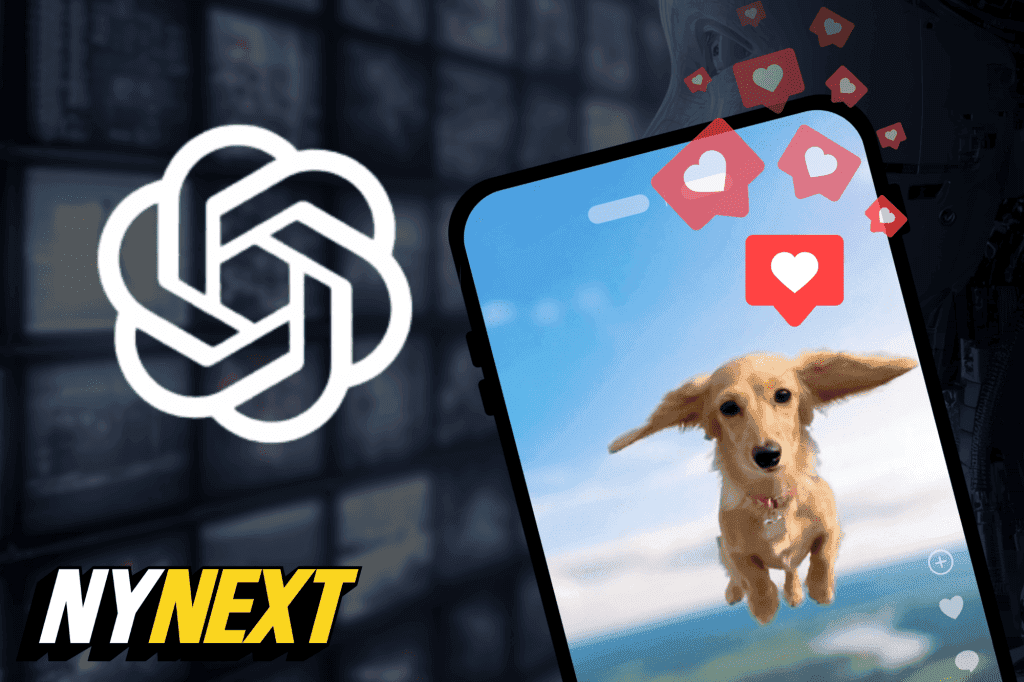
Source: New York Post
Enhanced Capabilities and User Experience
Sora 2 represents a substantial improvement over its predecessor, offering more realistic video generation and enhanced interpretive abilities. Users can create complex scenes based on short, unspecific prompts or detailed instructions, similar to ChatGPT's text generation capabilities
1
. The app also introduces audio generation, matching the capabilities of competitors like Google's Veo 3 model2
.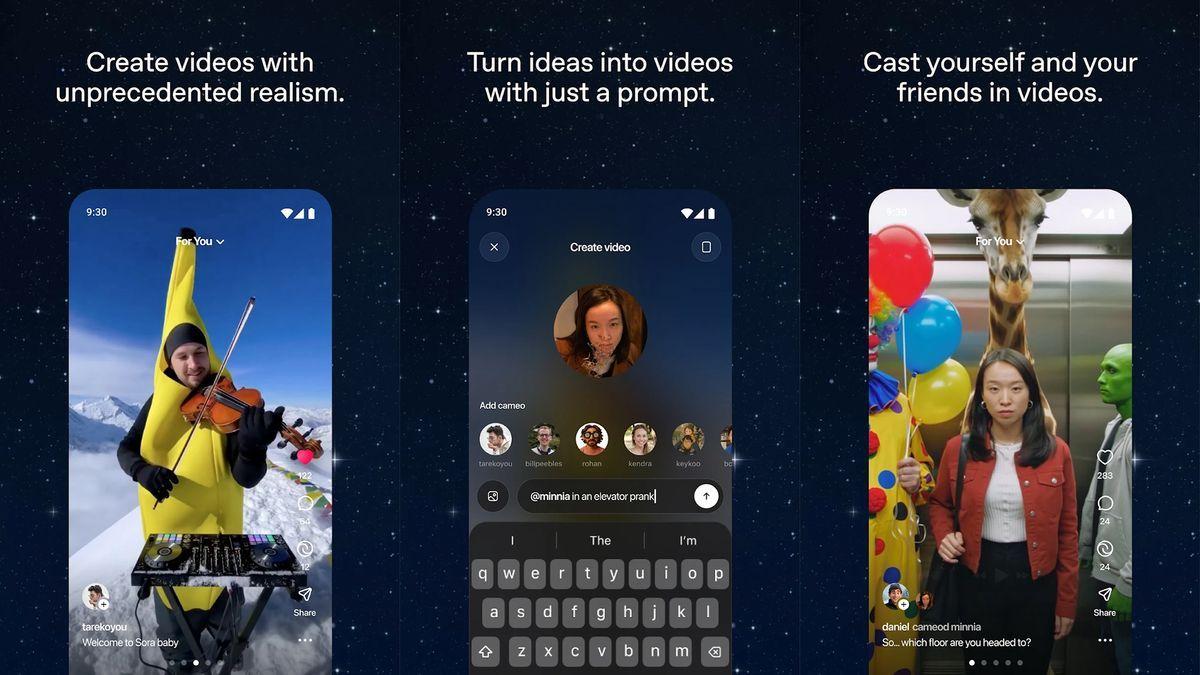
Source: TechRadar
One of Sora 2's standout features is the 'cameo' system, which allows users to authorize the use of their likeness in AI-generated videos. This feature adds a personal touch to the content creation process while raising questions about privacy and consent
1
.Availability and Platform Expansion
Currently, Sora 2 is available on iOS devices and the web, with access limited to invited users
2
. However, OpenAI is expanding its reach, with an Android version now open for pre-registration in the US and Canada4
. This move signals OpenAI's intention to make Sora 2 accessible to a broader audience, potentially increasing its impact on the content creation landscape.Controversy and Copyright Concerns
The launch of Sora 2 has not been without controversy. Major Hollywood groups, including the Motion Picture Association, have raised objections to OpenAI's copyright policies
3
. These concerns have led to changes in how the model handles prompts for certain sensitive categories of generated content.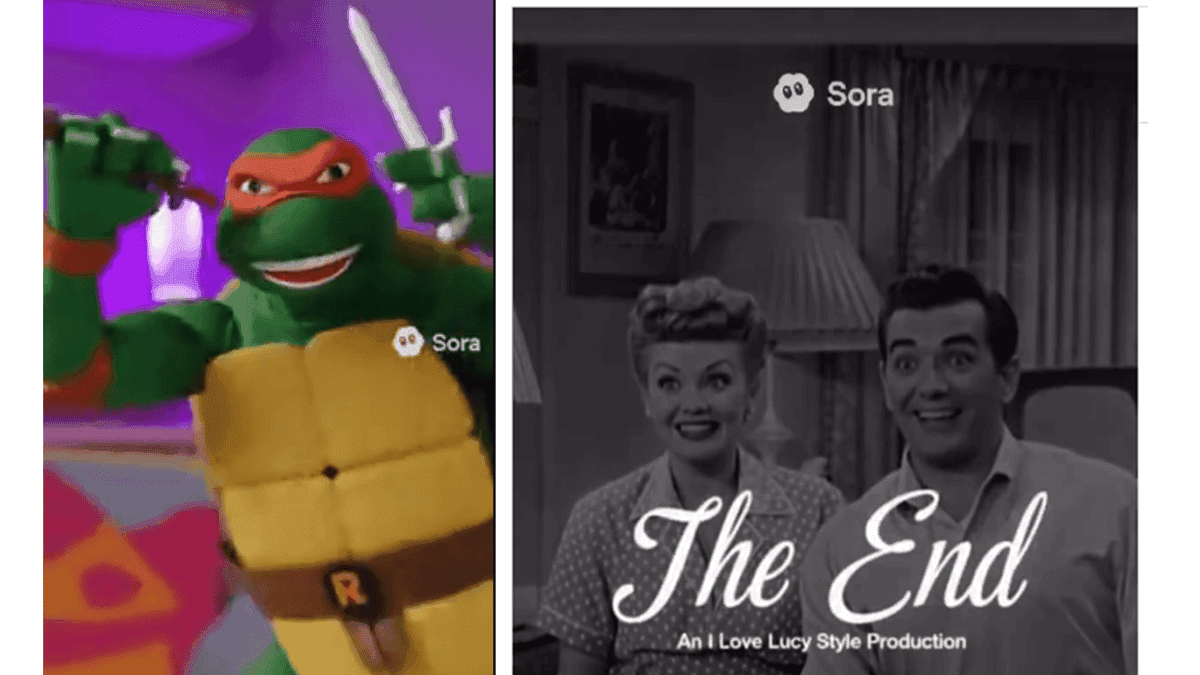
Source: TechRadar
OpenAI has implemented restrictions on generating videos with copyrighted characters and is working on providing rights holders more granular control over character generation
1
. However, the app still faces challenges in balancing creative expression with copyright protection.Related Stories
Future Implications and Industry Impact
The rapid advancement of AI video generation tools like Sora 2 has significant implications for various industries, particularly entertainment and media. Some speculate that this technology could lead to AI-generated on-demand TV and movies, potentially revolutionizing content creation and consumption
1
.As Sora 2 continues to evolve, OpenAI is exploring ways to monetize the platform and allow for fan fiction creation
1
. This development could open up new avenues for content creators and potentially reshape the entertainment industry.Challenges and Future Developments
Despite its impressive capabilities, Sora 2 still faces challenges in consistently producing high-quality content. Users may encounter distortions and errors in generated videos, requiring multiple attempts and prompt tweaking to achieve desired results
2
.As OpenAI continues to refine Sora 2, the company will need to address these technical issues while navigating the complex landscape of copyright laws, ethical considerations, and user expectations. The future of AI-generated video content hangs in the balance, with Sora 2 at the forefront of this rapidly evolving field.
References
Summarized by
Navi
[1]
